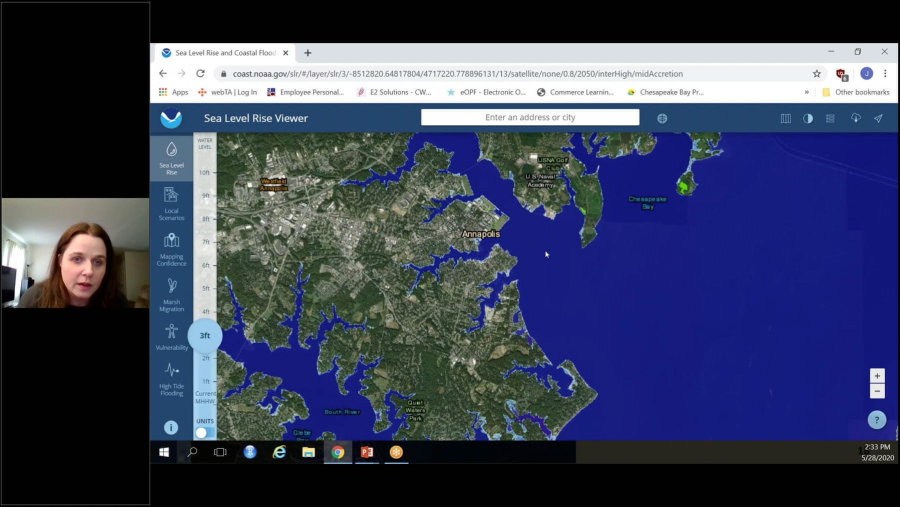Chesapeake Bay educators continue to hone their skills virtually
NOAA Chesapeake Bay Office releases webinar series for environmental educators

During the fall of 2019, the National Oceanic and Atmospheric Administration (NOAA) Chesapeake Bay Office, in partnership with the Chesapeake Bay Program’s Education Workgroup, began hosting a series of virtual webinars for educators in the watershed. The webinars were designed to give educators a platform to network, share best practices and learn more about how to apply the latest Chesapeake Bay science in the classroom. What the organization couldn’t have predicted was that in a few short months, the COVID-19 pandemic would bring outdoor and in-classroom activities to a halt—making the online training all the more valuable to practitioners whose work was disrupted.
Since the pandemic began, attendance of the Meaningful Watershed Educational Experience (MWEE) Practitioners Webinar Series has shot up from around 30-50 attendees on average to upwards of 120. Now, each webinar is available on the Chesapeake Bay Program’s YouTube channel for educators to catch up on, with more coming out each month.
Often facilitated by NOAA staff or key partners, the webinars focus in large part on MWEEs, a specific class of educational experiences in which students investigate local environmental issues, and either explore or directly apply solutions to them. Topics in the webinar series—which range from climate change in the Chesapeake to the application of regional satellite data—provide practitioners with real life case studies to incorporate into their student lessons.
In one particular session titled “Oysters in the Chesapeake,” Oyster Restoration Program Director Stephanie Westby from the NOAA Chesapeake Bay Office covered the most recent research that is helping to achieve large scale oyster restoration in the Bay. In the webinar, Westby walked participants through the issues influencing the oyster population, described metrics of success and explained the process of oyster restoration step by step, using Harris Creek as a case study for success. Educators attending quickly began to discuss how they could translate the project into a lesson plan, recognizing that it had all the key ingredients of a MWEE: a clear environmental issue, a series of actions to take and references to local waterways.
Enhancing the ability of educators to plan and execute MWEEs is integral to achieving the Environmental Literacy goal of the Chesapeake Bay Watershed Agreement, which aims to “enable every student in the region to graduate with the knowledge and skills to act responsibly to protect and restore their local watershed.”
A list of upcoming webinars can be found on the webpage for the NOAA Environmental Training Center, and educators can view all of the webinars on the Chesapeake Bay Program’s YouTube channel. To learn more about MWEEs and how they’re being used to meet environment education goals, visit the Bay Program’s resource for Chesapeake teachers, Bay Backpack.

Comments
There are no comments.
Thank you!
Your comment has been received. Before it can be published, the comment will be reviewed by our team to ensure it adheres with our rules of engagement.
Back to recent stories